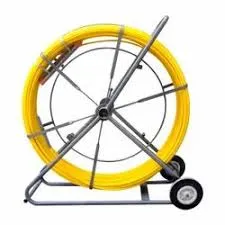
-
 Afrikaans
Afrikaans -
 Albanian
Albanian -
 Amharic
Amharic -
 Arabic
Arabic -
 Armenian
Armenian -
 Azerbaijani
Azerbaijani -
 Basque
Basque -
 Belarusian
Belarusian -
 Bengali
Bengali -
 Bosnian
Bosnian -
 Bulgarian
Bulgarian -
 Catalan
Catalan -
 Cebuano
Cebuano -
 Corsican
Corsican -
 Croatian
Croatian -
 Czech
Czech -
 Danish
Danish -
 Dutch
Dutch -
 English
English -
 Esperanto
Esperanto -
 Estonian
Estonian -
 Finnish
Finnish -
 French
French -
 Frisian
Frisian -
 Galician
Galician -
 Georgian
Georgian -
 German
German -
 Greek
Greek -
 Gujarati
Gujarati -
 Haitian Creole
Haitian Creole -
 hausa
hausa -
 hawaiian
hawaiian -
 Hebrew
Hebrew -
 Hindi
Hindi -
 Miao
Miao -
 Hungarian
Hungarian -
 Icelandic
Icelandic -
 igbo
igbo -
 Indonesian
Indonesian -
 irish
irish -
 Italian
Italian -
 Japanese
Japanese -
 Javanese
Javanese -
 Kannada
Kannada -
 kazakh
kazakh -
 Khmer
Khmer -
 Rwandese
Rwandese -
 Korean
Korean -
 Kurdish
Kurdish -
 Kyrgyz
Kyrgyz -
 Lao
Lao -
 Latin
Latin -
 Latvian
Latvian -
 Lithuanian
Lithuanian -
 Luxembourgish
Luxembourgish -
 Macedonian
Macedonian -
 Malgashi
Malgashi -
 Malay
Malay -
 Malayalam
Malayalam -
 Maltese
Maltese -
 Maori
Maori -
 Marathi
Marathi -
 Mongolian
Mongolian -
 Myanmar
Myanmar -
 Nepali
Nepali -
 Norwegian
Norwegian -
 Norwegian
Norwegian -
 Occitan
Occitan -
 Pashto
Pashto -
 Persian
Persian -
 Polish
Polish -
 Portuguese
Portuguese -
 Punjabi
Punjabi -
 Romanian
Romanian -
 Russian
Russian -
 Samoan
Samoan -
 Scottish Gaelic
Scottish Gaelic -
 Serbian
Serbian -
 Sesotho
Sesotho -
 Shona
Shona -
 Sindhi
Sindhi -
 Sinhala
Sinhala -
 Slovak
Slovak -
 Slovenian
Slovenian -
 Somali
Somali -
 Spanish
Spanish -
 Sundanese
Sundanese -
 Swahili
Swahili -
 Swedish
Swedish -
 Tagalog
Tagalog -
 Tajik
Tajik -
 Tamil
Tamil -
 Tatar
Tatar -
 Telugu
Telugu -
 Thai
Thai -
 Turkish
Turkish -
 Turkmen
Turkmen -
 Ukrainian
Ukrainian -
 Urdu
Urdu -
 Uighur
Uighur -
 Uzbek
Uzbek -
 Vietnamese
Vietnamese -
 Welsh
Welsh -
 Bantu
Bantu -
 Yiddish
Yiddish -
 Yoruba
Yoruba -
 Zulu
Zulu


Nov . 19, 2024 00:05 Back to list
wire clamp
Understanding Wire Clamps A Comprehensive Guide
Wire clamps are essential components in various industries and applications, providing security and stability for electrical wiring, cables, and other related materials. These versatile devices come in various shapes, sizes, and materials, tailored to meet the needs of different projects. In this article, we will explore the significance, types, applications, and installation of wire clamps, highlighting their role in ensuring safety and efficiency.
What is a Wire Clamp?
A wire clamp is a fastening device designed to secure and organize wires or cables, preventing them from moving or being misplaced. Wire clamps can be made from several materials, including metal, plastic, and rubber, each offering different levels of durability, flexibility, and temperature resistance. They are widely used in construction, automotive, electronics, and other fields where wire management is crucial.
Types of Wire Clamps
There are several types of wire clamps, each suited for specific applications
1. Cable Clamps Typically made of metal or plastic, these clamps are used to secure and organize multiple cables in a bundle. They are especially useful in electrical installations and can help reduce the risk of damage due to tangling or tension.
2. Pinch Clamps These clamps work by pinching the wire tightly against a surface to secure it in place. They are often used in automotive applications, where they help hold wires against vehicle frames or panels.
3. Mounting Clamps Designed to attach cables to walls or other structures, mounting clamps help keep wires neat and prevent them from being a tripping hazard. They are common in household wiring and commercial electrical installations.
4. Rubber Clamps These clamps provide a gentle grip on wires and cables, protecting them from abrasion and damage. They are used in environments where vibrations or movement may occur, such as in machinery or vehicles.
5. Quick Release Clamps These clamps offer a convenient way to secure and release wires quickly. They are often used in temporary setups or areas where frequent adjustments are necessary.
wire clamp

Applications of Wire Clamps
Wire clamps serve a wide range of applications across different industries. In the electrical and telecommunications industries, wire clamps are vital for securing cables to prevent damage or signal loss. In automotive settings, they help manage wiring harnesses and connections, ensuring that systems function correctly. Additionally, in construction, wire clamps are used for organizing electrical lines and cables in buildings and other structures, contributing to safer environments.
In household settings, wire clamps can be beneficial in organizing power cords and electronics, reducing clutter and minimizing hazards. Many DIY enthusiasts and professionals utilize wire clamps in their projects for improved wire management.
Installation and Best Practices
Installing wire clamps requires careful planning and execution. Here are some best practices to consider
- Assess the Need Before installation, evaluate the wire or cable layout to determine how many clamps are necessary and the best locations for placing them.
- Choose the Right Type Based on the application, select the appropriate type of wire clamp to ensure it meets the required standards for security and protection.
- Follow Manufacturer Instructions Adhering to the manufacturer's guidelines during installation will ensure optimal performance and safety.
- Regular Inspection Periodically check the clamps to ensure they remain secure and that no wear or damage has occurred over time. This proactive approach will help prevent issues down the line.
Conclusion
Wire clamps are indispensable tools for effective wire management in various applications. With the right type and proper installation, these devices enhance the safety and efficiency of electrical systems, contributing to organized spaces and reliable performance. Whether in industrial, automotive, or residential settings, understanding the role and usage of wire clamps can significantly improve both functionality and safety.
Latest news
The Unique Design of Cable Socks
NewsJun.04,2025
Swivel Connectors in Industrial Automation
NewsJun.04,2025
Safety Features of Link Sticks
NewsJun.04,2025
How to choose the best cable pulling winch for sale
NewsJun.04,2025
Fish tape safety precautions
NewsJun.04,2025
Essential Maintenance Tips for Cable Pulling Tools
NewsJun.04,2025











